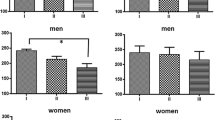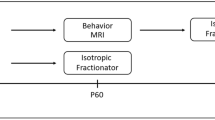Abstract
Sickness behavior (SB) is considered part of the adaptive behavioral and neuroimmune changes that occur in response to inflammatory processes. However, SB is a motivational state modulated by the environmental context. The objective of this study was to evaluate if selenium could ameliorate symptoms of SB and if stress would affect these responses. We induced SB in rats using lipopolysaccharide (LPS). We choose selenium based on our findings of LPS-exposure decreasing selenium levels in rats. We exposed these rats to a psychogenic stress and studied motivational modulation paradigms, such as cure of the organism, preservation of the species, and fight or flight. We studied ultrasonic vocalizations, open-field behaviors, body weight, and IL-1 beta and IFN-gamma serum levels. LPS-induced SB was evidenced by decreased motor/exploratory activity and increased proinflammatory mediators’ levels. Selenium treatment did not exert beneficial effects on SB, revealing that probably the selenium deficiency was not related to SB. When analyzed with the stress paradigm, the behavior of rats was differentially affected. LPS did not affect behavior in the presence of stress. SB was abrogated during stressor events to prioritize survival behaviors, such as fight-or-flight. Contrarily, the association of LPS, selenium, and stress induced SB even during stressor events, revealing that this combination induced a cumulative toxic effect.


Similar content being viewed by others
References
Abdullaev II, Sycheva IV, Lazymova ZA, Veselovskaia TV, Abdullaev FI (1987) Antiviral action of sodium selenite and its combination with remantadine. Vopr Virusol 32:670–675
Aderem A, Ulevitch RJ (2000) Toll-like receptors in the induction of the innate immune response. Nature 406:782–787
Antoniadis EA, McDonald RJ (1999) Discriminative fear conditioning to context expressed by multiple measures of fear in the rat. Behav Brain Res 101:1–13
Aubert A (1999) Sickness and behaviour in animals: a motivational perspective. Neurosci Biobehav Rev 23:1029–1036
Aubert A, Goodall G, Dantzer R, Gheusi G (1997) Differential effects of lipopolysaccharide on pup retrieving and nest building in lactating mice. Brain Behav Immun 11:107–118
Bay-Richter C, Janelidze S, Hallberg L, Brundin L (2011) Changes in behaviour and cytokine expression upon a peripheral immune challenge. Behav Brain Res 222:193–199. https://doi.org/10.1016/j.bbr.2011.03.060
Beck MA, Levander OA, Handy J (2003) Selenium deficiency and viral infection. J Nutr 133:1463S–1467S
Bluthe RM, Walter V, Parnet P, Laye S, Lestage J, Verrier D, Poole S, Stenning BE, Kelley KW, Dantzer R (1994) Lipopolysaccharide induces sickness behaviour in rats by a vagal mediated mechanism. C R Acad Sci III 317:499–503
Boyd R (2011) Selenium stories. Nat Chem 3:570. https://doi.org/10.1038/nchem.1076
Buynitsky T, Mostofsky DI (2009) Restraint stress in biobehavioral research: recent developments. Neurosci Biobehav Rev 33:1089–1098. https://doi.org/10.1016/j.neubiorev.2009.05.004
Dantzer R, Kelley KW (2007) Twenty years of research on cytokine-induced sickness behavior. Brain Behav Immun 21:153–160
Dantzer R, O'Connor JC, Freund GG, Johnson RW, Kelley KW (2008) From inflammation to sickness and depression: when the immune system subjugates the brain. Nat Rev Neurosci 9:46–56. https://doi.org/10.1038/nrn2297
Dhabhar FS, McEwen BS (1996) Stress-induced enhancement of antigen-specific cell-mediated immunity. J Immunol 156:2608–2615
Duntas LH, Benvenga S (2015) Selenium: an element for life. Endocrine 48:756–775. https://doi.org/10.1007/s12020-014-0477-6
Echeverry MB, Guimaraes FS, Del Bel EA (2004) Acute and delayed restraint stress-induced changes in nitric oxide producing neurons in limbic regions. Neuroscience 125:981–993. https://doi.org/10.1016/j.neuroscience.2003.12.046
El-Ghazaly MA, Fadel N, Rashed E, El-Batal A, Kenawy SA (2017) Anti-inflammatory effect of selenium nanoparticles on the inflammation induced in irradiated rats. Can J Physiol Pharmacol 95:101–110. https://doi.org/10.1139/cjpp-2016-0183
Estevez AO, Mueller CL, Morgan KL, Szewczyk NJ, Teece L, Miranda-Vizuete A, Estevez M (2012) Selenium induces cholinergic motor neuron degeneration in Caenorhabditis elegans. Neurotoxicology 33:1021–1032. https://doi.org/10.1016/j.neuro.2012.04.019
Fairweather-Tait SJ, Bao Y, Broadley MR, Collings R, Ford D, Hesketh JE, Hurst R (2011) Selenium in human health and disease. Antioxid Redox Signal 14:1337–1383. https://doi.org/10.1089/ars.2010.3275
Fischer CW, Elfving B, Lund S, Wegener G (2015) Behavioral and systemic consequences of long-term inflammatory challenge. J Neuroimmunol 288:40–46. https://doi.org/10.1016/j.jneuroim.2015.08.011
Han XJ, Qin P, Li WX, Ma QG, Ji C, Zhang JY, Zhao LH (2017) Effect of sodium selenite and selenium yeast on performance, egg quality, antioxidant capacity, and selenium deposition of laying hens. Poult Sci 96:3973–3980. https://doi.org/10.3382/ps/pex216
Hart BL (1988) Biological basis of the behavior of sick animals. Neurosci Biobehav Rev 12:123–137
Inagaki H, Mori Y (2015) The emission of stress-induced 22-kHz calls in female rats is independent of testosterone levels. Horm Behav 69:116–118. https://doi.org/10.1016/j.yhbeh.2015.01.001
Kent S, Bluthe RM, Kelley KW, Dantzer R (1992) Sickness behavior as a new target for drug development. Trends Pharmacol Sci 13:24–28
Kirsten TB, Taricano M, Maiorka PC, Palermo-Neto J, Bernardi MM (2010) Prenatal lipopolysaccharide reduces social behavior in male offspring. Neuroimmunomodulation 17:240–251. https://doi.org/10.1159/000290040
Kirsten TB, Lippi LL, Bevilacqua E, Bernardi MM (2013) LPS exposure increases maternal corticosterone levels, causes placental injury and increases IL-1β levels in adult rat offspring: relevance to autism. PLoS One 8:e82244
Kirsten TB, Chaves-Kirsten GP, Bernardes S, Scavone C, Sarkis JE, Bernardi MM, Felicio LF (2015a) Lipopolysaccharide exposure induces maternal Hypozincemia, and prenatal zinc treatment prevents autistic-like Behaviors and disturbances in the striatal dopaminergic and mTOR Systems of Offspring. PLoS One 10:e0134565. https://doi.org/10.1371/journal.pone.0134565
Kirsten TB, Galvao MC, Reis-Silva TM, Queiroz-Hazarbassanov N, Bernardi MM (2015b) Zinc prevents sickness behavior induced by lipopolysaccharides after a stress challenge in rats. PLoS One 10:e0120263. https://doi.org/10.1371/journal.pone.0120263
Koller LD, Exon JH (1986) The two faces of selenium-deficiency and toxicity--are similar in animals and man. Can J Vet Res 50:297–306
Larson SJ, Dunn AJ (2001) Behavioral effects of cytokines. Brain Behav Immun 15:371–387
Lenczowski MJ, Van Dam AM, Poole S, Larrick JW, Tilders FJ (1997) Role of circulating endotoxin and interleukin-6 in the ACTH and corticosterone response to intraperitoneal LPS. Am J Phys 273:R1870–R1877
Lipinski B (2017) Sodium selenite as an anticancer agent. Anti Cancer Agents Med Chem 17:658–661. https://doi.org/10.2174/1871520616666160607011024
MacFarquhar JK, Broussard DL, Melstrom P, Hutchinson R, Wolkin A, Martin C, Burk RF, Dunn JR, Green AL, Hammond R, Schaffner W, Jones TF (2010) Acute selenium toxicity associated with a dietary supplement. Arch Intern Med 170:256–261. https://doi.org/10.1001/archinternmed.2009.495
Miyake K (2003) Innate recognition of lipopolysaccharide by CD14 and toll-like receptor 4-MD-2: unique roles for MD-2. Int Immunopharmacol 3:119–128
Moraes MM, Galvao MC, Cabral D, Coelho CP, Queiroz-Hazarbassanov N, Martins MF, Bondan EF, Bernardi MM, Kirsten TB (2017) Propentofylline prevents sickness behavior and depressive-like behavior induced by lipopolysaccharide in rats via neuroinflammatory pathway. PLoS One 12:e0169446. https://doi.org/10.1371/journal.pone.0169446
Nair AB, Jacob S (2016) A simple practice guide for dose conversion between animals and human. J Basic Clin Pharm 7:27–31. https://doi.org/10.4103/0976-0105.177703
NCR (2011) National Research Council. Committee for the Update of the guide for the care and use of laboratory animals. Guide for the care and use of laboratory animals. National Academies Press, Washington (DC)
Patti CL, Frussa-Filho R, Silva RH, Carvalho RC, Kameda SR, Takatsu-Coleman AL, Cunha JL, Abilio VC (2005) Behavioral characterization of morphine effects on motor activity in mice. Pharmacol Biochem Behav 81:923–927. https://doi.org/10.1016/j.pbb.2005.07.004
Prut L, Belzung C (2003) The open field as a paradigm to measure the effects of drugs on anxiety-like behaviors: a review. Eur J Pharmacol 463:3–33
Rasekh HR, Potmis RA, Nonavinakere VK, Early JL, Iszard MB (1991) Effect of selenium on plasma glucose of rats: role of insulin and glucocorticoids. Toxicol Lett 58:199–207
Rasekh HR, Davis MD, Cooke LW, Mazzio EA, Reams RR, Soliman KF (1997) The effect of selenium on the central dopaminergic system: a microdialysis study. Life Sci 61:1029–1035
Schrauzer GN (2001) Nutritional selenium supplements: product types, quality, and safety. J Am Coll Nutr 20:1–4
Spiller HA, Pfiefer E (2007) Two fatal cases of selenium toxicity. Forensic Sci Int 171:67–72. https://doi.org/10.1016/j.forsciint.2006.06.077
Takahashi N, Kashino M, Hironaka N (2010) Structure of rat ultrasonic vocalizations and its relevance to behavior. PLoS One 5:e14115. https://doi.org/10.1371/journal.pone.0014115
Thakore N, Reno JM, Gonzales RA, Schallert T, Bell RL, Maddox WT, Duvauchelle CL (2016) Alcohol enhances unprovoked 22-28 kHz USVs and suppresses USV mean frequency in high alcohol drinking (HAD-1) male rats. Behav Brain Res 302:228–236. https://doi.org/10.1016/j.bbr.2016.01.042
Torabi M, Kesmati M, Pourreza N, Najafzadeh Varzi H, Galehdari H (2018) Neurobehavioral and biochemical modulation following administration of MgO and ZnO nanoparticles in the presence and absence of acute stress. Life Sci 203:72–82. https://doi.org/10.1016/j.lfs.2018.04.023
White PJ (2016) Selenium accumulation by plants. Ann Bot 117:217–235. https://doi.org/10.1093/aob/mcv180
Yamashita Y, Yamashita M, Iida H (2013) Selenium content in seafood in Japan. Nutrients 5:388–395. https://doi.org/10.3390/nu5020388
Yirmiya R, Weidenfeld J, Barak O, Avitsur R, Pollak Y, Gallily R, Wohlman A, Ovadia H, Ben-Hur T (1999) The role of brain cytokines in mediating the behavioral and neuroendocrine effects of intracerebral mycoplasma fermentans. Brain Res 829:28–38
Acknowledgements
This work is part of the master thesis of Túlio Mazuco (UNIP). The authors are grateful to Profa. Dra. Elizabeth Cristina Perez Hurtado, Wilton Pereira dos Santos, and Fabiana Toshie de Camargo Konno (UNIP) for technical support. This research was supported by the Conselho Nacional de Desenvolvimento Científico e Tecnológico (CNPq/Universal 406835/2016-0), the Coordenação de Aperfeiçoamento de Pessoal de Nível Superior (CAPES/Prêmio 1029/2014) and the Paulista University. The funders had no role in study design, data collection and analysis, decision to publish, or preparation of the manuscript.
Author information
Authors and Affiliations
Corresponding author
Ethics declarations
Conflict of interest
The authors declare that there are no conflicts of interest.
Additional information
Publisher’s Note
Springer Nature remains neutral with regard to jurisdictional claims in published maps and institutional affiliations.
Electronic supplementary material
ESM 1
Example of 22–28 kHz ultrasonic vocalizations. Effects of LPS (100 μg/kg), selenium (Na2SeO3; 1.3 mg/kg), and stress (restraint) on 22–28 kHz ultrasonic vocalizations in adult male rats. Example of ultrasonic vocalizations detected in the frequency range of 22–28 kHz in stressed rats: (A) amplitude-time plot of the entire recording (300 s); (B) amplitude-time plot of the selected interval (corresponds to the part of A marked in yellow); (C) spectrogram of the selected data, showing four syllables emitted by a rat (PNG 310 kb)
ESM 2
22–28 kHz ultrasonic vocalizations. Effects of LPS (100 μg/kg), selenium (Na2SeO3; 1.3 mg/kg), and stress (restraint) on the 22–28 kHz ultrasonic vocalizations of adult male rats. (SAL) saline; (LPS) lipopolysaccharide; (Se) selenium; (Str) stress. 1 h between each injection; 1 h after the last injection for the beginning of the stress session (n = 4–7 per group; two-way ANOVA followed by the Newman-Keuls test). Data are expressed as the mean ± SEM (PNG 111 kb)
ESM 3
Body weight. Effects of LPS (100 μg/kg), selenium (Na2SeO3; 1.3 mg/kg), and stress (restraint) on the body weight of adult male rats. Rat’s body weight was calculated immediately after the open-field test. This time interval was greater than 4 h from the first injection. (SAL) saline; (LPS) lipopolysaccharide; (Se) selenium; (Str) stress. 1 h between each injection; 1 h after the last injection for the beginning of the stress session (n = 7 per group; two-way ANOVA followed by the Newman-Keuls test). Data are expressed as the mean ± SEM (PNG 35 kb)
Rights and permissions
About this article
Cite this article
Mazuco, T.R.R., Biondi, T.F., Silva, E.P. et al. LPS-induced sickness behavior is not affected by selenium but is switched off by psychogenic stress in rats. Vet Res Commun 43, 239–247 (2019). https://doi.org/10.1007/s11259-019-09766-8
Received:
Accepted:
Published:
Issue Date:
DOI: https://doi.org/10.1007/s11259-019-09766-8




